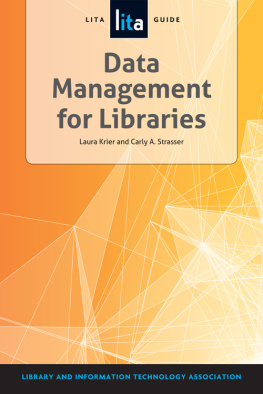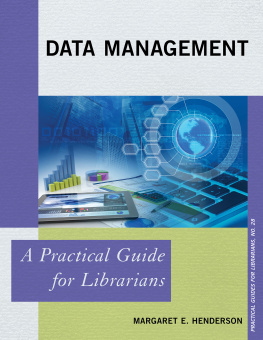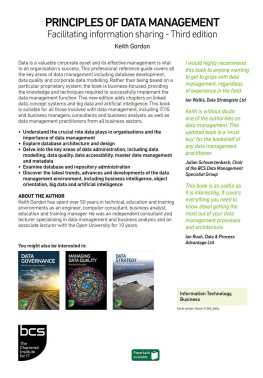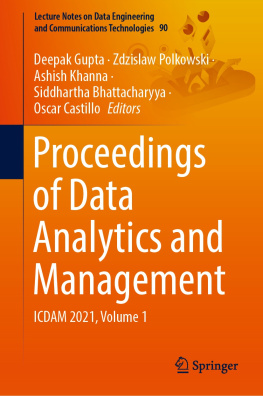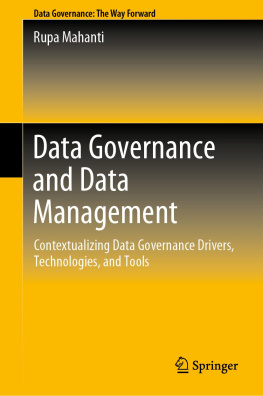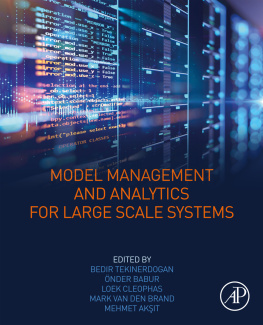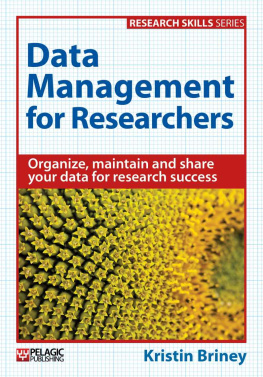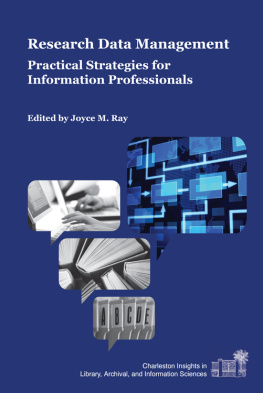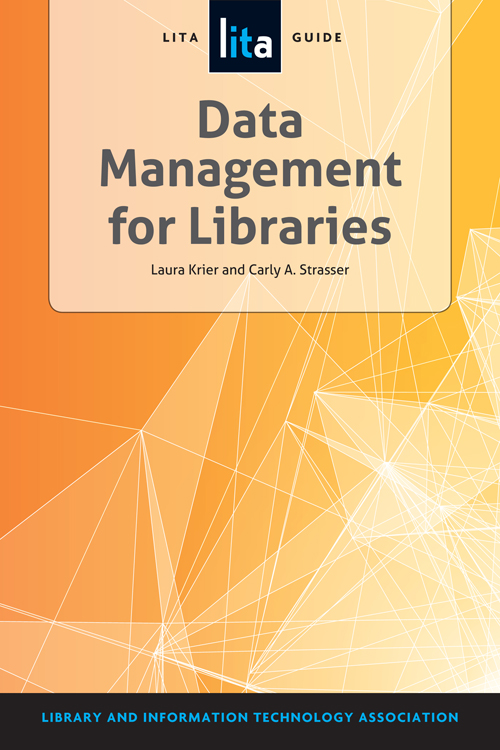
ALA TechSource purchases fund advocacy, awareness, and accreditation programs for library professionals worldwide.
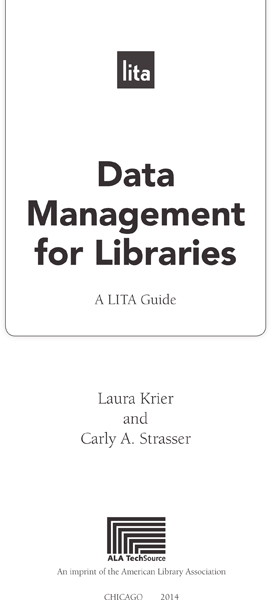
2014 by the American Library Association. Any claim of copyright is subject to applicable limitations and exceptions, such as rights of fair use and library copying pursuant to Sections 107 and 108 of the U.S. Copyright Act. No copyright is claimed for content in the public domain, such as works of the U.S. government.
Extensive effort has gone into ensuring the reliability of the information in this book; however, the publisher makes no warranty, express or implied, with respect to the material contained herein.
ISBNs: 978-1-55570-969-3 (paper); 978-1-55570-975-4 (PDF); 978-1-55570-977-8 (ePub); 978-1-55570-976-1 (Kindle);. For more information on digital formats, visit the ALA Store at alastore.ala.org and select eEditions.
Cataloging-in-Publication data is on file with the Library of Congress.
Cover image HunThomas/Shutterstock, Inc.
Contents
APPENDIXES
The buzz around data management in libraries has been growing quickly since the National Science Foundation announced that data management plans would be a required component of all grant applications starting January 2011. Many librarians felt pressed to implement data management consulting services without having a firm grasp of how best to support researchers at their institutions. In all kinds of institutions, librarians are experimenting with different service models and giving themselves crash courses in research data and the requirements for effective data management, and many are doing it with minimal guidance.
This book is intended to offer that guidance. There are a lot of elements to building an effective data management consulting service, and for many of us there are a lot of new things to learn. Jumping into a new arena, and coming up to speed as quickly as many of us have, can be challenging. Through extensive research, discussions with data management librarians around the country, and close work with data management experts, we have pulled together this planning guide to help you and your colleagues build an effective and well-used service for your researchers, faculty, and students.
Unfortunately, building a data management service is not something librarians can do on our own. Meaningful data management is a goal that should be supported at all levels of the institution, from lab assistants to department heads to the president of the university. This can be one of the biggest hurdles for libraries looking to implement these new services, but, thankfully, in recent years there has been an increasing understanding on the part of many people working in academia about the need for these kinds of services. This book offers insight into building that support in your institution and maintaining the relationships that ensure your service is successful.
Though many librarians work closely with research faculty and understand the data that is being produced, some of us are new to the world of big data. This book offers a primer on dataon why and how data should be effectively managed. We also offer some tips for talking to faculty about why data management matters, and we help you learn to conduct successful data management interviews.
This guide is here not only to help you understand data management, and how your library can be invaluable to researchers, but to help you build a service in your library. Most of the data management guidelines on the web are directed at faculty; this guide has a different approach: to help you help researchers. We walk you through every piece of a data management plan, help you make decisions about repositories and other infrastructure, and guide you through some of the difficult questions that arise about intellectual property, sharing and access, metadata, and preservation.
Data management in libraries is a new and growing area. There are sure to be changes over time as we learn more. We hope that this guide can make you and your colleagues better able to contribute to the conversation as we all work collectively to organize, preserve, and provide access to research data, as we have with other products of research.
Chapter One
In nearly every field, the practice of research is changing. New technologies and tools are being used to conduct research, resulting in wholly new types of data, in vastly expanding quantities. In both the sciences and humanities, research data is increasingly taking on a digital form, living on local hard drives and remote servers, and scattered across networks. More and more, this data is born in a digital form, although physical forms of are still common within some fields of study. Some research projects combine physical and digital data, and researchers must keep track of both simultaneously. And, increasingly, research projects are producing huge sets of data that would be unmanageable without the aid of computers to process them.
These new technologies are opening the doors to greater collaboration among researchers, engineers, and computer scientists, in all fields of study. And, increasingly, librarians are being brought into these partnerships to contribute needed expertise in data management and preservation. Researchers are more interested in conducting their work than in managing and organizing the data behind it, and this is where librarians can provide valuable services and support. As librarians move into this field, it is crucial that we understand the domains in which researchers are working, and that we have a solid grasp of the kinds of research data being produced. Data types can vary widely at different institutions and in different fields of study, but whether you are at a large research library, a medical school, a liberal arts college, or in support of a particular department it is likely that research is being conducted, and that researchers need data support. You need to work closely with faculty and other researchers to know how best to support them, but a quick review of the data landscape provides a solid foundation to begin discussions.
Types of Research Data
You are likely already familiar with one major distinction between types of data: qualitative versus quantitative. Quite simply, quantitative data deals with things numerically. Qualitative data is descriptive in nature and deals with the quality of things, giving rise to categorization rather than quantification. Those in the social sciences, and in fields such as physics, are often more likely to use quantitative data, whereas fields such as anthropology and history are more likely to use qualitative data. But the truth is that the distinction between these two data types is not as hard and fast as you may believe, and people in all fields gather both types of data in their research. Beyond this basic distinction, there are many other categories of data that may be part of a research project.
Primary data is data that is collected by the researcher within a particular project. This is original data that arises from a particular experiment or observation. It is gathered and maintained by the researcher. Researchers often also use secondary data, originally created by someone else. For example, some researchers use census data gathered by a national organization to draw conclusions about a particular population. Libraries may be asked to acquire data sets for use in a particular research project, or researchers may find data sets through open-access repositories.
Next page
